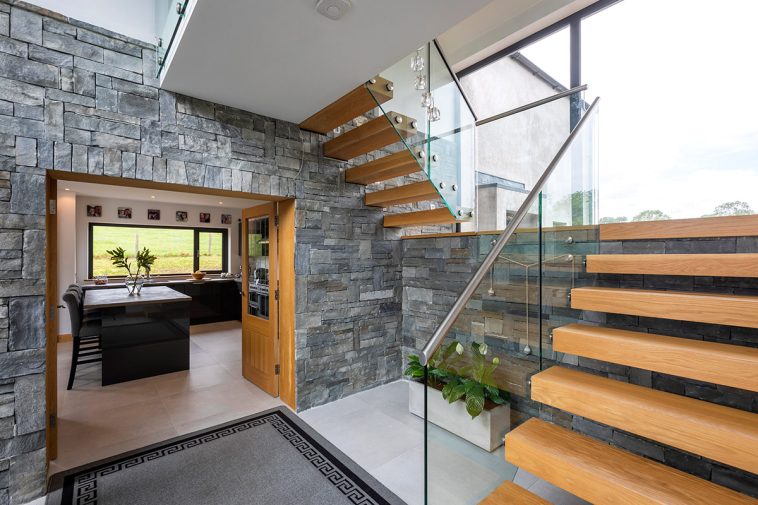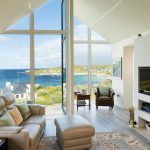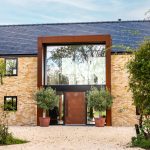Here’s what you can expect to pay for joinery costs in the UK today. This includes staircases, internal doors, and built-in units.
In this article we cover:
- The cost of building a staircase
- The cost of finishing a staircase
- The cost of balustrades, handrails and newel posts
- The cost of internal doors and ironmongery
- The cost of internal screens
- The cost of built-in units
- The cost of wardrobes
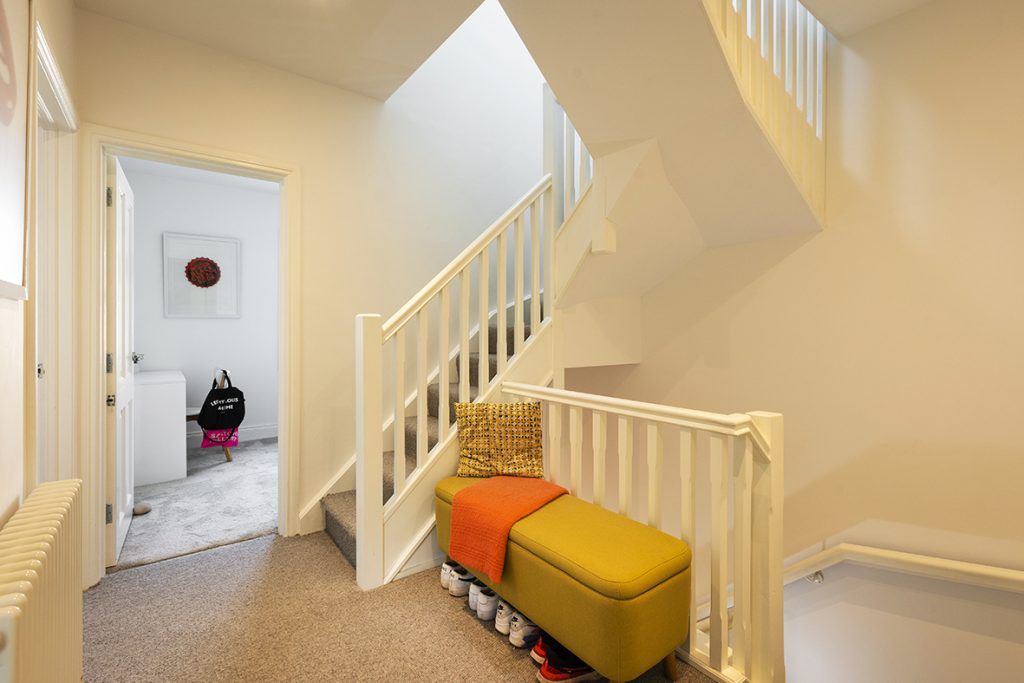
Joinery costs: staircase structure
The cost of staircases varies based on size, shape, materials and layout. You can pay under £1,500 or over £80,000 for bespoke floating designs.
Two main factors affect costs: material choice and design. Timber is the most common material. Options range from MDF, pine, to solid oak, walnut or mahogany.
For a simple straight flight of stairs, an MDF staircase costs less than £750. In contrast, a solid wood staircase may cost three times that.
[adrotate banner="58"]The material you choose affects the entire cost and design of the staircase. Cheaper materials often need carpeting to finish them. MDF usually requires carpet, while solid pine could be left exposed with a varnish.
You can add a carpet finish for under £900, including the landing. For more expensive exposed timber staircases, you can choose a fully varnished finish or a combination of exposed wood with a central carpet runner.
Some may opt for different materials at the top of each step (tred), like walnut or oak, with the rest made of pine or painted a light colour.
Concrete staircases are another option. They can be precast (fabricated off site and delivered and lifted into position) or cast on-site. Concrete lasts longer and won’t creak over time. However, they typically start at £1,400 for a straight flight, rising on cost based on design.
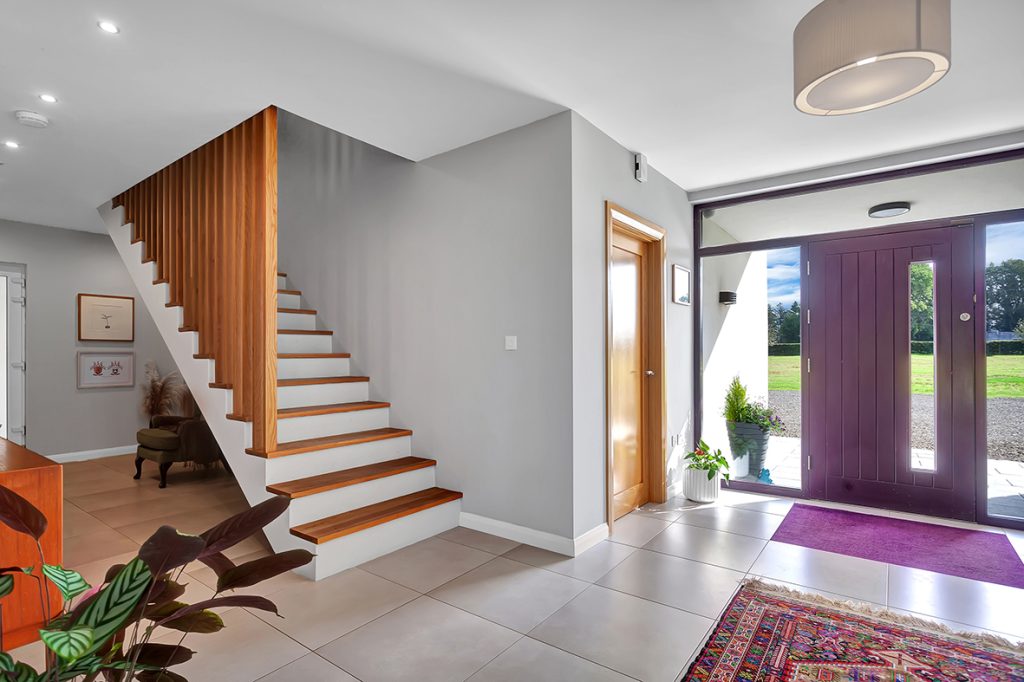
Staircase finishes
Besides the base cost, concrete staircases also need additional finishes. Each step often requires cladding in carpet, wood or tile, which can cost thousands.
The layout of the staircase is probably the most important cost factor. A staircase between two walls needs fewer finishes, keeping costs lower.
To maximise space, architects often specify half-flights and landings. While this design reduces the staircase’s footprint, it makes the project more complex, doubling the cost
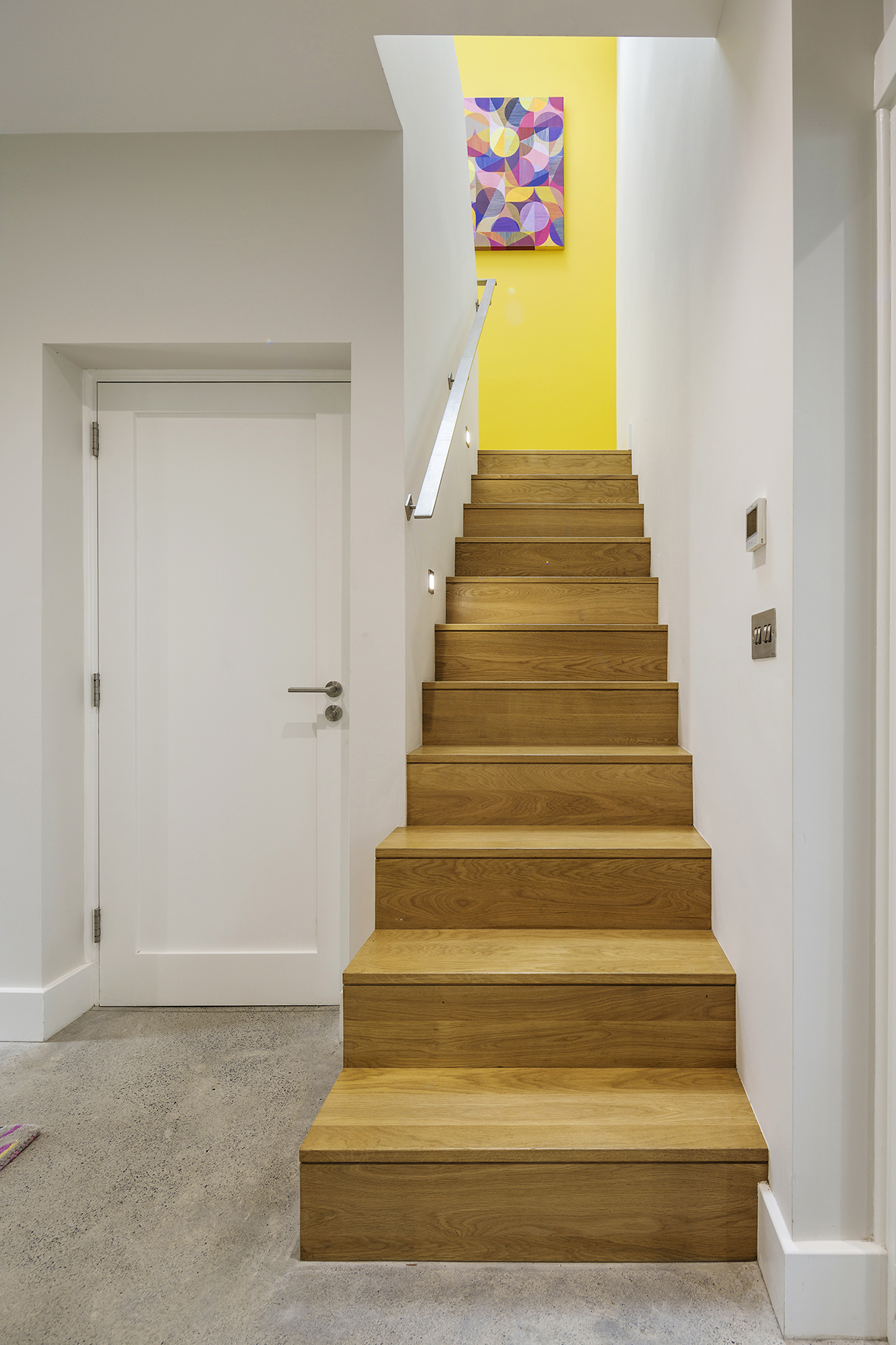
Today, many people prefer open staircase designs that is visually exposed on both sides. This adds costs for finishes on both sides and requires balustrades and handrails.
Curved staircases are the most expensive. Their structure and material can cost over ten times that of a straight staircase, but they offer a big design impact.
Balustrades, handrails and newel posts
If the staircase is between two walls, it likely won’t need balustrades or newel posts. In this case, you only need a handrail attached to the wall, reducing costs.
The price for handrails can range from a few hundred to thousands of pounds, depending on the material and the size of the staircase. Common choices include timber, glass and metal.
In recent years, glass balustrades have become popular, but they can be pricey. For safety, the glass must be tempered or laminated, and typically costs from £100 to £250 per metre.
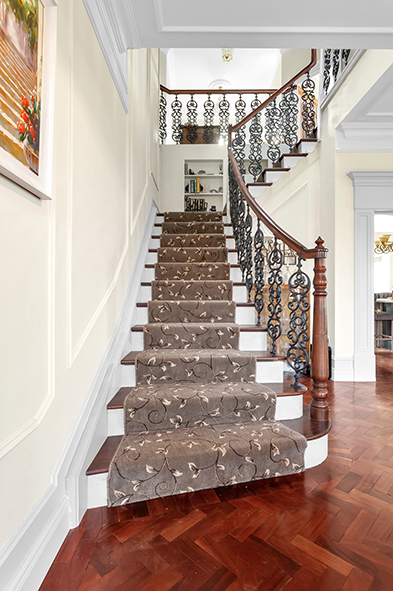
Metalwork often requires detailed craftsmanship and site welding. Standard finishes are painted mild steel or high-end stainless steel. Depending on the design, metalwork can cost between £150 to £350 per metre.
Joinery costs: door setup and finishes
When it comes to internal doors, there are many options to choose from: materials, shapes, sizes, colours and textures. Generally, the cost will include the frame, architrave and ironmongery.
Doors are supplied either pre-hung or unassembled. Pre-hung doors cost less labour, while unassembled doors need routing for hinges, locks and cutting and forming the frame to the required size.
A basic door might start at around £125, but this can increase based on material and finishes. A solid bespoke door and frame could cost over £500.rame, ironmongery and labour.
A door on its own will cost far less but you need to factor in frame, ironmongery and labour.
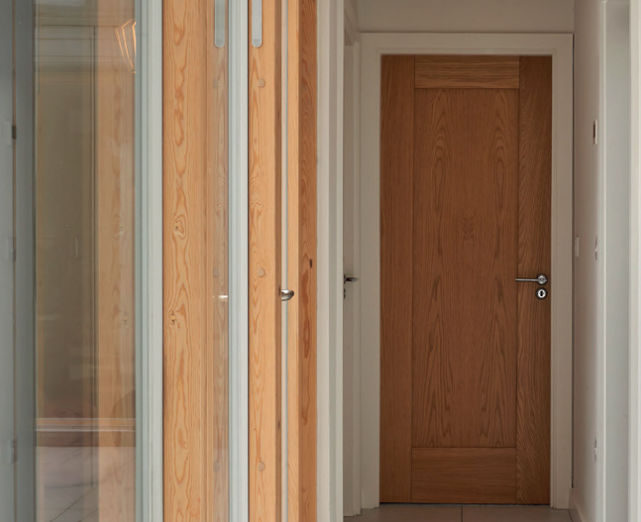
Sliding doors usually cost about the same as unassembled doors due to the need to install guide rails and other specialist fittings. Then it’s pro rata for double and multiple doors.
The simplest doors come primed in white, while prefinished options in oak or walnut cost more.
Ironmongery includes hinges, handles, locks and other essential items. Prices can range from under £40 to over £90 per door, based on quality
Fire doors generally cost more than standard doors, but primed white fire doors are now more affordable.
Large screen type windows are becoming popular as wall replacements as they allow more light into a space, while maintaining room separation. Screens can be made of hardwood or softwood, with fire-rated and non-rated glazing. The cost of these screens usually starts at over £550 per sqm.
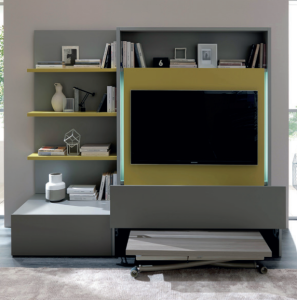
Joinery costs: inbuilt units
Costs vary for inbuilt units like wardrobes, sideboards, dressers, understairs storage and TV units, based on materials and finishes. Common materials include chipboard, MDF and solid timber. The more intricate the design, the higher the price.
For wardrobes, the type of doors (solid or glass), drawers, mirrors and accessories from shoe holders to tie racks affect the total cost. The average cost of a three-door fitted wardrobe is around £3,250.
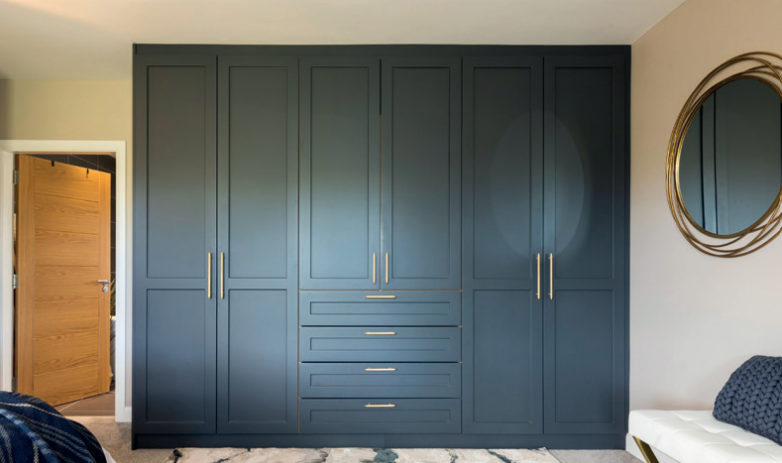
Window boards, window framing (similar to liners and architraves), shutters and radiator cabinets also fall under joinery costs. Like other pieces, prices depend on material selection and finish. It’s important to budget for these items from the start.
Cost notes: Always make sure you get at least three quotes for comparisons.

